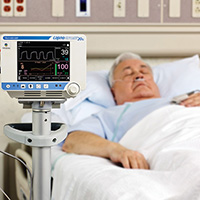A focused ethnography of how endoscopy practitioners utilize capnography in sedated patients

Accepted: 14 September 2020
All claims expressed in this article are solely those of the authors and do not necessarily represent those of their affiliated organizations, or those of the publisher, the editors and the reviewers. Any product that may be evaluated in this article or claim that may be made by its manufacturer is not guaranteed or endorsed by the publisher.
Authors
The literature shows that respiratory complications are common with sedation. Given the inherent risk, capnography monitoring is recommended whenever sedation is administered. We aimed to explore sedation practitioners’ behavior patterns and perceptions regarding capnography monitoring during endoscopy sedation and examine how capnography influenced clinical decision making when assessing respiration. We conducted a focused ethnography with triangulated observations and semi-structured interviews, and we purposively sampled and recruited five sedation practitioners as participants at a hospital in Saudi Arabia. Through data analysis, we identified representative themes and found cultural differences between anesthesia practitioners and nurses when using capnography during sedation. Anesthesia practitioners linked safety and the use of capnography to maintain adequate respiration, while nurses believed capnography was a secondary supportive monitor to patient observation and assessment. Findings also captured the unique cultures and values of each professional group to be associated with the varying perceptions. We also identified several factors facilitating and barring adequate utilization of capnography. In conclusion, professional culture, hospital policy, knowledge and previous experience with capnography guided the monitoring practice of endoscopy practitioners when assessing respiration during sedation.
How to Cite
PAGEPress has chosen to apply the Creative Commons Attribution NonCommercial 4.0 International License (CC BY-NC 4.0) to all manuscripts to be published.

 https://doi.org/10.4081/qrmh.2020.9077
https://doi.org/10.4081/qrmh.2020.9077



